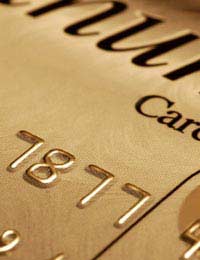The History of Credit Cards

The credit card has developed into the world's favourite means of payment after being the most successful of a series of merchant credit schemes. It was first introduced in the 1920s in the United States, and was used specifically to sell fuel to a growing number of automobile owners. In 1938 several companies started to accept each other's cards and the global credit card network began to grow.
The concept of using a card for purchases was invented in 1887 by an American man called Edward Bellamy and described in his utopian novel Looking Backward. The slightly different concept of paying merchants using a card was invented in 1950 by Ralph Schneider and Frank X. McNamara in order to consolidate multiple cards. The Diners Club, which was created partially through a merger with Dine and Sign, produced the first "general purpose" charge card, which required the entire bill to be paid by customers with each statement. This was then followed by the introduction of American Express and Carte Blanche.
Bank of America
Bank of America created the BankAmericard in 1958, a product which eventually evolved into the Visa system. MasterCard came into being in 1966 when a group of credit-issuing banks established MasterCharge. The fractured nature of the US banking system meant that credit cards became an effective way for those who were travelling around the country to move their credit to places where they could not directly use their banking facilities. In 1966 Barclaycard in the UK launched the first credit card outside of the US.There are now countless variations on the basic concept of revolving credit for individuals, including credit cards with the branding of various organisations, corporate-user credit cards, store cards and more.
Although the use of credit cards has reached very high levels in the US, Canada and the UK, many cultures have preferred to stay much more cash oriented, or develop alternative forms of cash-less payments, such as Carte bleue, or the EC-card (used in Germany, France, Switzerland).
Security Measures
In recent times various new security measures have been introduced to credit cards, apart from the traditional signature formality required for receits. Measures such as Chip and Pin, which requires users to tap in a personalised code before a purchase can be made, random credit card company checks on retailers and the inclusion of user's photos within credit card designs have been useful in tackling fraud and other criminal activity associated with credit cards.The design of the credit card itself has become a major selling point in recent years. The value of the card to the issuer being related to the Customer's usage of the card. This has led to the rise of Co-Brand and Affinity cards, where the card design is related to something the user has an affinity with, such as a charity, or political association. In most cases a percentage of the value of purchases made with the card is returned to the affinity group, although the bank funding the credit card will make the most money from the scheme.
Business Energy With a Difference
If you are looking for business energy or need advanced solutions like remote energy monitoring, new supplies, downgrading or upgrading capacity, have a no obligation chat with Purely Energy.
To find our more get in touch here. or call 0161 521 3400.








